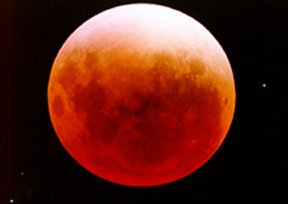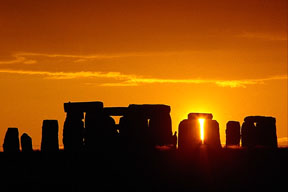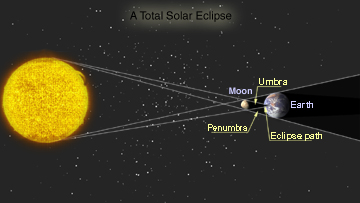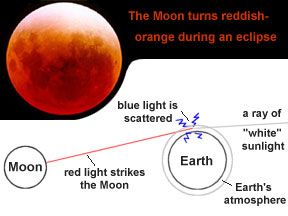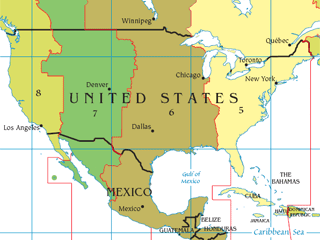Click on image for full size
Windows to the Universe original image
Lunar Eclipses
Lunar eclipses are special events that only occur when certain conditions are met. First and foremost, the Moon must be in full phase. Secondly, the Sun, Earth and Moon must be in a perfectly straight line. If both of these are met, then the Earth's shadow can block the Sun's light from hitting the Moon.
The only time these three objects are in a straight line is when the Sun and Moon are in the line of nodes. This line is the intersection of two planes: the Earth's orbit and the Moon's orbit. The best way to explain this is to use your hands. Take your right hand and hold it flat and level. This will represent the Earth's orbit, because it moves around in a circle in this plane.
Now, place your flat, left hand next to your right, and tilt your fingers up and your palm down. This represents the Moon's orbit, because it's orbit is slightly tilted compared to the Earth's. Now, notice the line where your two hands cross. This is the line of nodes!
There are three types of lunar eclipses. Which one we will see depends on the alignment of the three celestial objects. But first, you need to know that the Earth's shadow is broken up into two parts. The umbra is the darker part of the shadow, where no part of the Sun can been seen. The penumbra is lighter than the umbra, because part of the Sun can be seen.
So, when part of the Moon passes through the umbra, this is called a partial eclipse. When all of the Moon passes through the umbra, this is called a total eclipse. Finally, when the Moon only passes through the penumbra, this is called a penumbral eclipse.
Now that you know all about eclipses, you can step outside and enjoy the show! Remember that lunar eclipses are not dangerous to the eye, so you don't need protection to watch. Just find a nice, cozy spot and enjoy!







